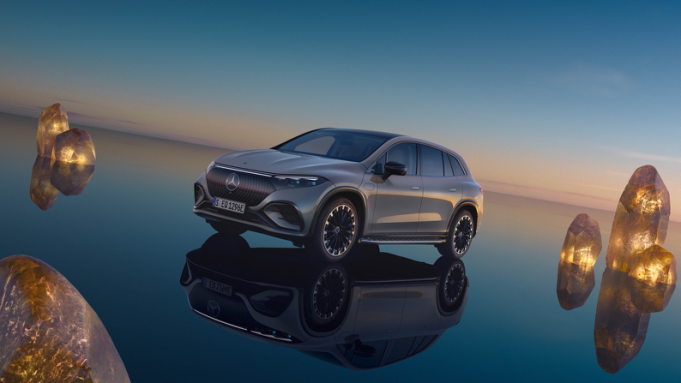Text by Joey
In just a few minutes, Mercedes-Benz gracefully released its electric SUV flagship – EQS SUV.
Last night, my friends circle was flooded with news of various car manufacturers’ listings. To be honest, staying at home for so long has made me a bit overwhelmed by such a grand occasion. It wasn’t until someone reminded me, “If it weren’t for the pandemic, tonight should have been the eve of the Beijing Auto Show.”
Obviously, the epidemic has disrupted the original pace of car companies, but has not prevented them from releasing new cars according to their original plans. After all, this year’s KPI still depends on the spring breeze of April to help them set sail. And if asked who left the deepest impression on me on this glittering night, it would undoubtedly be Mercedes-Benz.
As early as a week ago, my friends circle was actually flooded with Mercedes-Benz’s teaser poster for the upcoming release of the EQS SUV model on April 19th. However, it was surprising that after the 18:00 press conference started, Mercedes-Benz released all the important information about this car in just a few minutes.
This is not because Mercedes-Benz does not value the EQS SUV model. On the contrary, this is obviously a demonstration of confidence in its own brand and products. Because good products are always about tone, not listing product features. What’s more important is to understand Mercedes-Benz’s product strategy, which cannot be simply viewed from the perspective of products, but from the perspective of corporate strategy.
Because you have to believe that as the inventor of automobiles, or one of the most successful automobile brands in China and even the world, Mercedes-Benz has its own mature and effective judgment methods for market demand and industry development direction.
Planning and Judgment
Mercedes-Benz’s electric vehicle plan has already been determined. They plan to achieve comprehensive electrification by 2030. Roughly calculated, if no other unexpected circumstances occur, this established goal is only 8 years away.
But time is tight and cannot prevent Mercedes-Benz from approaching this goal quickly. After all, the strength of the company itself, the maturity of car-making techniques, and the complete and smooth supply chain system can ensure that Mercedes-Benz can rapidly advance their plans.
This logic can be seen from the frequency of Mercedes-Benz’s new car releases. For example, at the end of last year, I had already test-driven the EQA and EQB, which are Mercedes’ production models for electric cars. The EQE, which was launched at the Munich Auto Show in September last year, or the EQS, which has already been sold in China, further confirmed this fact.
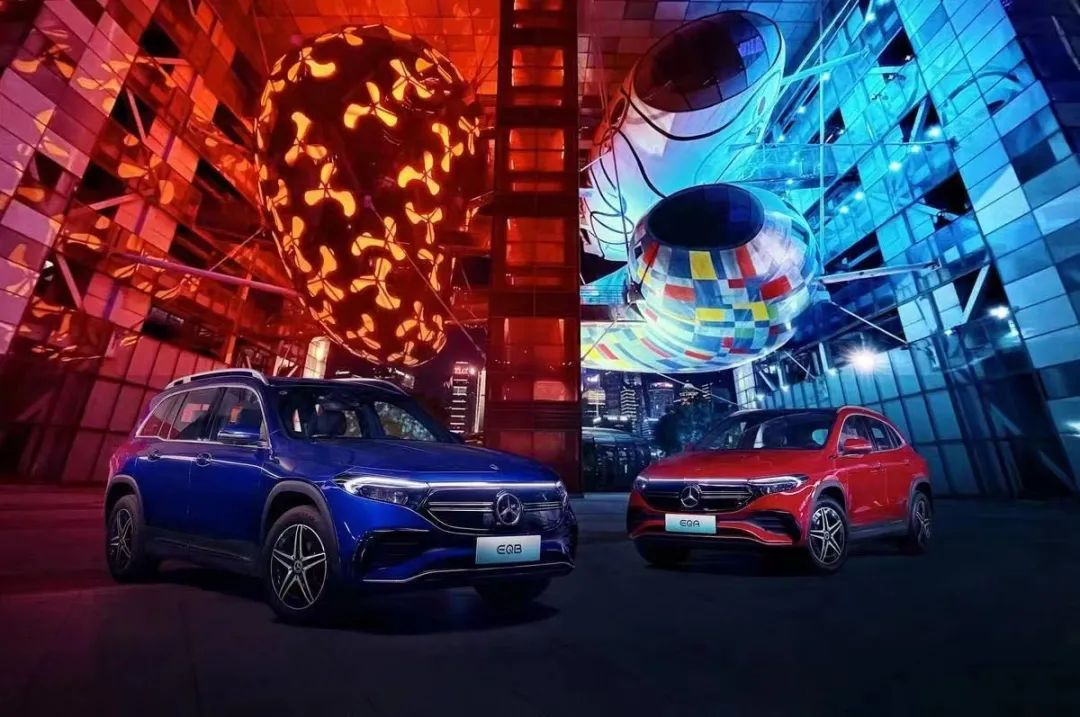 # Mercedes-Benz’s Electric Series
# Mercedes-Benz’s Electric Series
Mercedes-Benz’s electric product series is expanding rapidly before our eyes, using the naming convention of our most familiar product lines. This means that although traditional fuel vehicles remain the main sales force for Mercedes-Benz, electric vehicles are becoming an essential purchasing option for Mercedes-Benz cars in China, and even around the world.
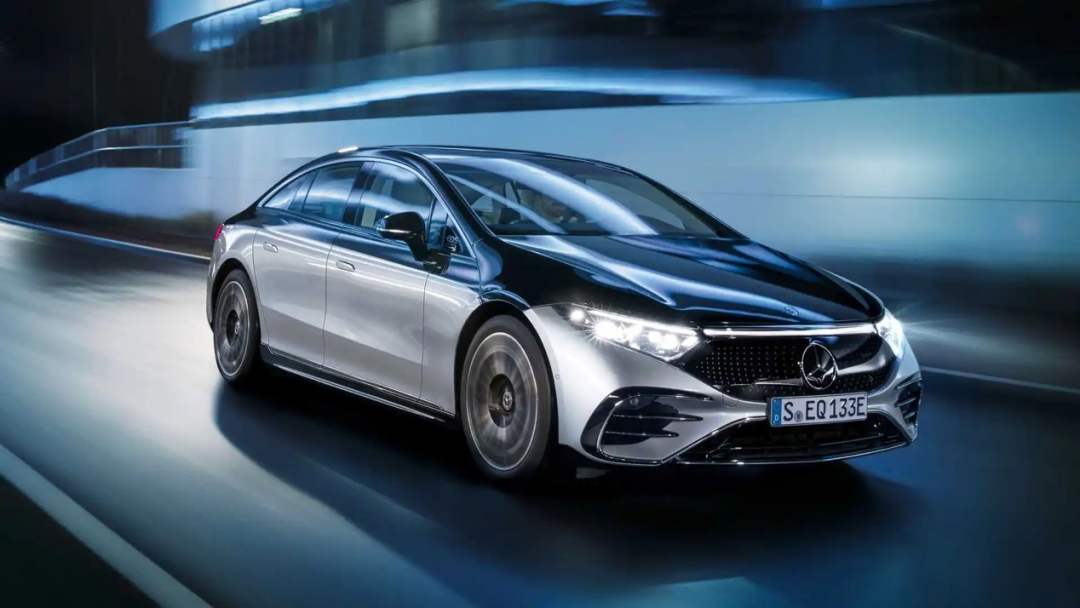
However, this rapid deployment is not just for the sake of speed. In fact, their product strategy still has priorities, and SUVs are the top priority. There is no doubt that after years of immersion in the Chinese market, Mercedes-Benz has made judgments about Chinese consumers’ preferences and car-buying habits.
This judgment began with Mercedes-Benz’s first pure electric vehicle EQC. Although this car was more of a market experiment at the time, it seems that Mercedes-Benz wants to continue down this road. Therefore, including the EQS SUV released yesterday, there are now four SUV models in Mercedes-Benz’s pure electric vehicle product line.
If the wealth code of car companies in the Chinese market can be summarized, it is “good brand, extended length, and SUV.” Mercedes-Benz has basically taken all of these on in the way to electrification. In the SUV product line, they almost have it all.
For example, the EQA and EQB SUV models are the main force representing Mercedes-Benz in the pure electric vehicle market. And the EQS SUV, which was released last night, undoubtedly has the same responsibility as the GLS, which is still using an internal combustion engine, to carry the banner of Mercedes-Benz’s electric SUV flagship.
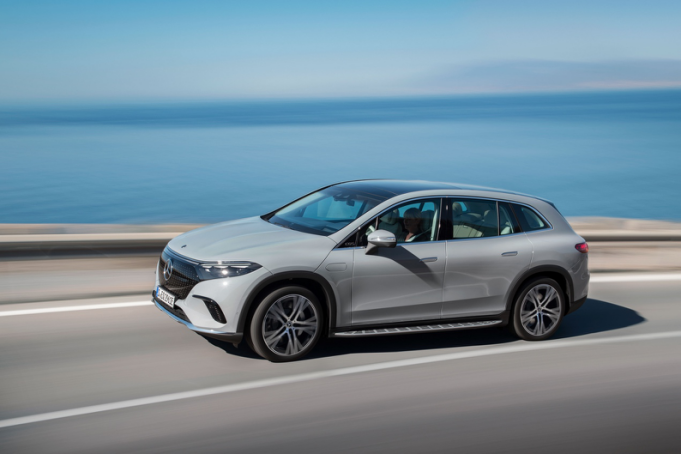
At this point in time when the old and new eras are transitioning, you may still be struggling with the choice between internal combustion engines and pure electric vehicles. But in fact, a company like Mercedes-Benz, with a deep accumulation, has never been eager to make you choose.
What they want to do is just plant a seed in your mind. Make you have a deep recognition of the name “Mercedes-Benz” no matter what era you’re in. Thus, in the inevitable era of electrification, every consumer will naturally have the desire and reason to continue choosing Mercedes-Benz.
Of course, such plans and judgments ultimately have to be implemented at the product level. Then, we will have another question–what kind of car is this EQS SUV?
Practicality and Technology
Clearly, Mercedes-Benz’s car-making will not be influenced too much by the pace of today’s new automobile brands. Because Mercedes-Benz, as the inventor of the car, must have its own persistence.
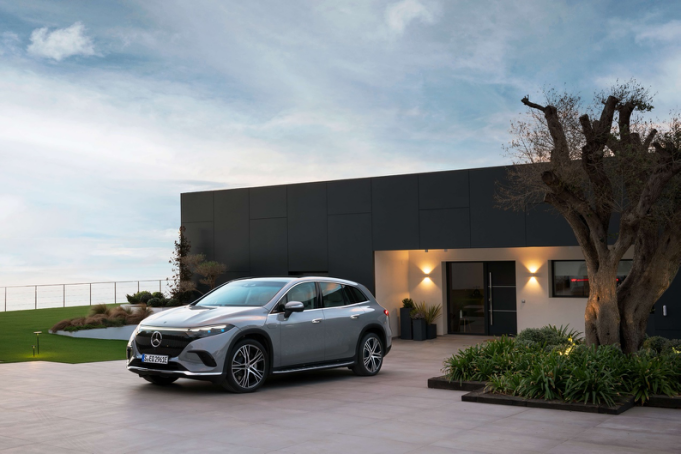
As I have emphasized many times before, the EQ series from Mercedes-Benz does not necessarily prioritize novelty and high-tech features, but rather aims to create an electric vehicle with a similar driving experience to that of a gasoline car. The shift in energy source does not entirely change the essence of what a car should feel like.
As a result, many of the important features found in Mercedes-Benz’s high-end SUV models can also be found in the EQS SUV. These include the 7-seat layout, multiple connectivity options, and a spacious, comfortable interior. The EQS SUV is also equipped with powerful electric motors, the 4MATIC all-wheel drive system, and intelligent “off-road” driving mode.
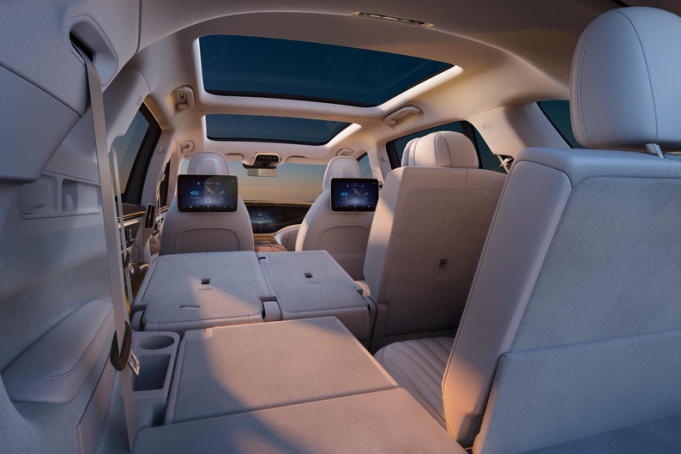
As you can see, Mercedes-Benz has managed to address both traditional indicators of luxury vehicles, such as ample space, four-wheel drive performance, and a luxurious interior, as well as newer indicators of electric vehicles, such as connectivity and powerful motors.
The logic of “if it fits, it works” apparent in the EQ series clearly sets it apart from other vehicle brands that try to force new features and technologies without any real innovation.
If I had to choose one product feature that left the deepest impression during Mercedes-Benz’s short presentation, it would undoubtedly be the large number of massive in-car screens.
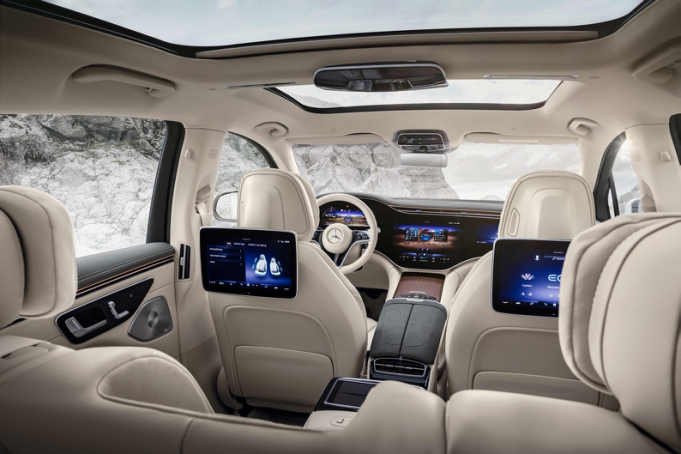
Today, having high-definition screens in cars is a mainstream requirement for all car manufacturers. But there is no clear consensus on how to use these screens to present cutting-edge technology and enhance human-machine interaction.
Mercedes-Benz, on the other hand, has been more practical in their approach to these screens. For starters, the screens serve as a major channel for Mercedes-Benz’s MBUX intelligent human-machine interaction system. Through strong autonomous learning ability, this system can provide intelligent suggestions for everything from information and entertainment to comfort and other vehicle functions.
Moreover, Mercedes-Benz does not shy away from the entertainment aspect of these screens. For example, the independent control interface of the 12.3-inch OLED display screen allows front passengers to watch videos while driving. Together with Mercedes-Benz’s Berlin Symphony sound system, the EQS SUV can create multidimensional soundscapes that cover 360 degrees, starting from 2D and transforming into a three-dimensional space.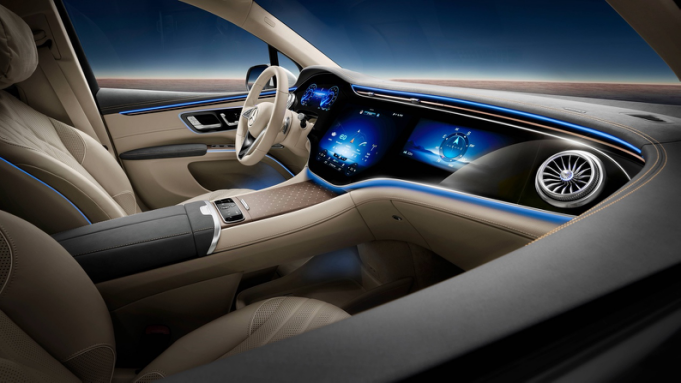
However, if you think this is all about the screen interaction of EQS SUV, it will obviously narrow your mindset. Because Mercedes-Benz knows that any entertainment is based on driving safety. Therefore, no matter what exciting movie the co-pilot is playing or what beautiful music is being listened to, EQS SUV will set up a technological guarantee for driving safety.
As long as the MBUX system detects that the driver’s attention has been attracted by the co-pilot’s screen, the vehicle will make judgments autonomously. When the driver observes the right side for more than 2 seconds, the screen content will automatically disappear.
Of course, these condensed feature points in the short release conference video cannot fully summarize EQS SUV. At least I still want to try its 660km battery life; I also want to try out the eATS electric drive system and air suspension. In addition, the 4.5-degree rear-wheel steering angle will bring flexible turning performance to this car with a length of up to 5.1 meters, which is also worth looking forward to.
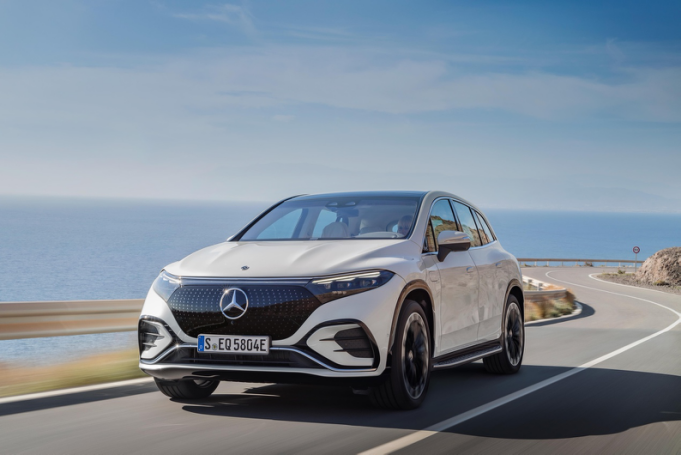
These interesting feature points cannot be fully demonstrated in a few minutes of video, but they have aroused my curiosity to try out this car even more. Although EQS SUV is only released now, according to Mercedes-Benz’s pace of promoting electrification, I believe it will not be long before it actually comes to us.
Some people say that times have changed and the appearance of cars should also follow suit. But brands that truly build cars have always mastered the direction of automotive development. No matter how the times change, I still believe that Mercedes-Benz will always be the most important member of the brand that grasps the direction.
This article is a translation by ChatGPT of a Chinese report from 42HOW. If you have any questions about it, please email bd@42how.com.
